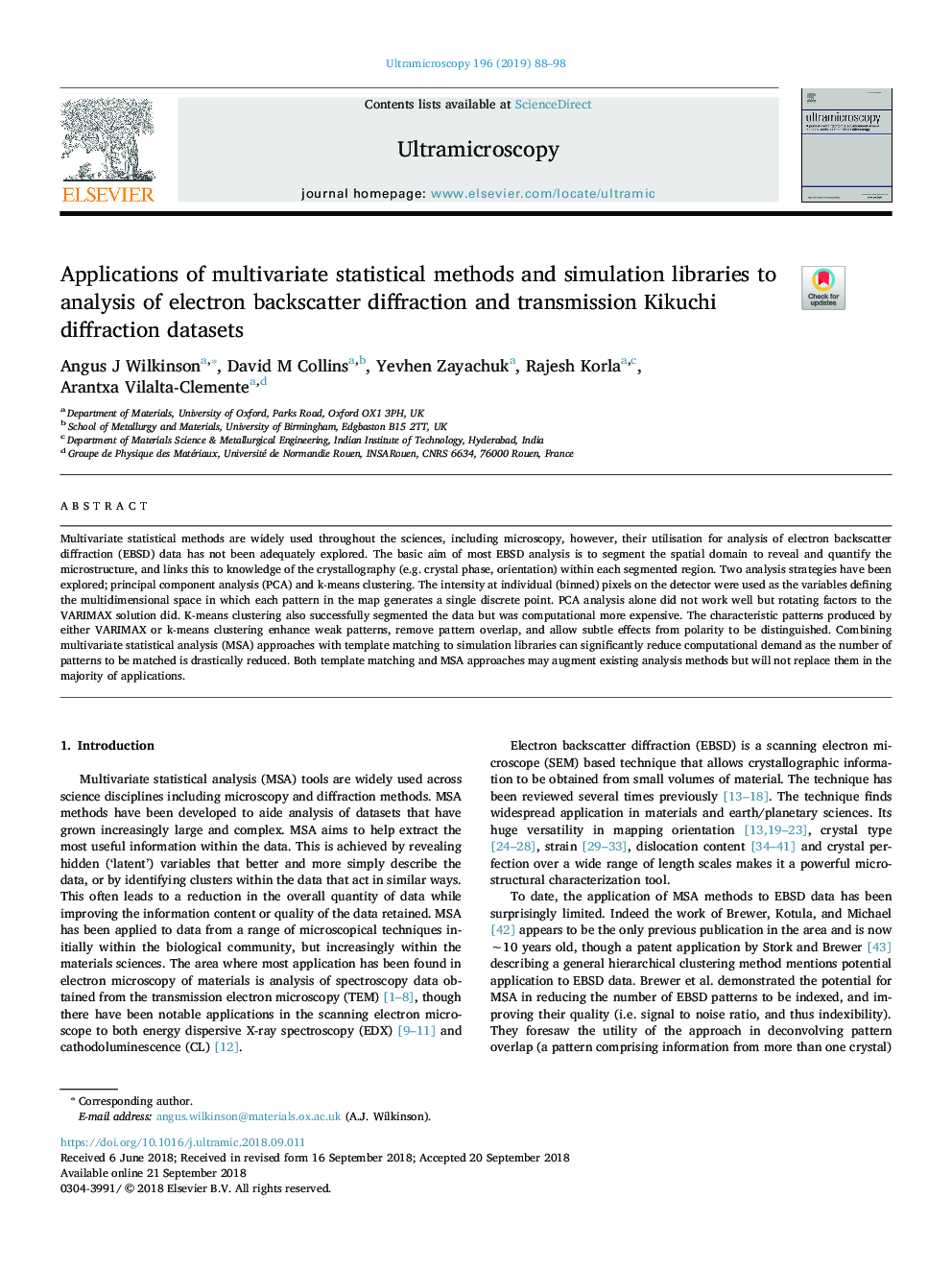| Article ID | Journal | Published Year | Pages | File Type |
|---|---|---|---|---|
| 11263241 | Ultramicroscopy | 2019 | 11 Pages |
Abstract
Multivariate statistical methods are widely used throughout the sciences, including microscopy, however, their utilisation for analysis of electron backscatter diffraction (EBSD) data has not been adequately explored. The basic aim of most EBSD analysis is to segment the spatial domain to reveal and quantify the microstructure, and links this to knowledge of the crystallography (e.g. crystal phase, orientation) within each segmented region. Two analysis strategies have been explored; principal component analysis (PCA) and k-means clustering. The intensity at individual (binned) pixels on the detector were used as the variables defining the multidimensional space in which each pattern in the map generates a single discrete point. PCA analysis alone did not work well but rotating factors to the VARIMAX solution did. K-means clustering also successfully segmented the data but was computational more expensive. The characteristic patterns produced by either VARIMAX or k-means clustering enhance weak patterns, remove pattern overlap, and allow subtle effects from polarity to be distinguished. Combining multivariate statistical analysis (MSA) approaches with template matching to simulation libraries can significantly reduce computational demand as the number of patterns to be matched is drastically reduced. Both template matching and MSA approaches may augment existing analysis methods but will not replace them in the majority of applications.
Related Topics
Physical Sciences and Engineering
Materials Science
Nanotechnology
Authors
Angus J Wilkinson, David M Collins, Yevhen Zayachuk, Rajesh Korla, Arantxa Vilalta-Clemente,
